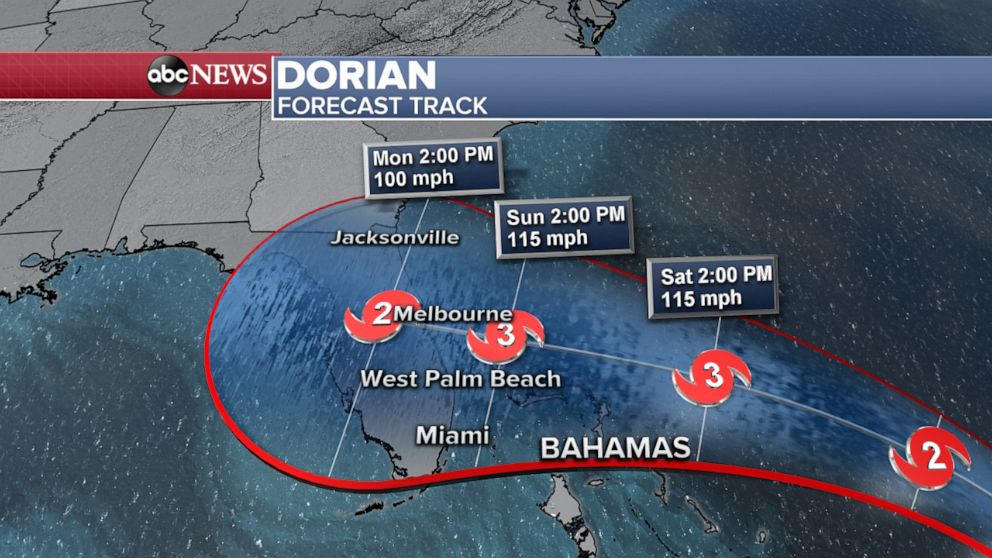
Thunderstorms in the northern portion of the wave were limited by an abundance of Saharan dust in the region. Around that time, much of the wave's convection or thunderstorm activity was located inland near Guinea and Senegal rather than close to its center. Hurricane Dorian originated from a large tropical wave – an elongated trough of low air pressure – that departed from the western coast of Africa on August 19, 2019. Origins and track through the Lesser Antilles

It then became fully extratropical the next day over the Gulf of Saint Lawrence and was absorbed by a larger extratropical cyclone on September 9. As Dorian became increasingly influenced by the westerlies, it transitioned into a post-tropical cyclone on September 7 just before passing over Nova Scotia. On September 6, Dorian made landfall on Cape Hatteras as a low-end Category 2 hurricane. Increasing wind shear weakened Dorian once again, as it turned northeast and approached the Outer Banks. On September 5, Dorian briefly reintensified into a Category 3 hurricane, as it traversed the warm waters of the Gulf Stream. The system fell below major hurricane status on September 3, as it began to accelerate northwards. ĭorian weakened steadily throughout September 2 the storm's forward momentum came to a crawl while it was crossing over Grand Bahama. The system reached peak intensity later that day, with winds of 185 mph (295 km/h) and a central pressure of 910 mbar ( hPa 26.87 inHg) while making landfall on Elbow Cay in The Bahamas. Dorian achieved Category 5 intensity – the highest classification on the Saffir–Simpson scale – on September 1. During this time, the hurricane turned west-northwestward, then westward, as a ridge built in the subtropics to the north. Intensification temporarily stagnated on August 29 before a spurt of rapid deepening began on August 30. Simultaneously, relaxing wind shear and warm sea surface temperatures allowed Dorian to become a Category 1 hurricane as it moved over the United States Virgin Islands. Moving farther north and east than anticipated, Dorian passed east of Puerto Rico on August 28. Lucia, causing the system's center to reform north of its previous location. Dorian's structure was seriously disrupted after encountering the mountains of St.



On August 27, Dorian made landfall in Barbados and St. The newly formed Dorian strengthened only gradually over the next few days because of dry air and vertical wind shear. The system organized into a tropical depression and later a tropical storm, both on August 24. The fifth tropical cyclone, fourth named storm, second hurricane, and first major hurricane of the 2019 Atlantic hurricane season, Dorian originated from a westward-traveling tropical wave, that departed from the western coast of Africa on August 19. The cyclone's intensity, as well as its slow forward motion near The Bahamas, broke numerous records. Hurricane Dorian was the strongest hurricane to affect The Bahamas on record, causing catastrophic damage on the islands of Abaco Islands and Grand Bahama, in early September 2019. Part of the 2019 Atlantic hurricane season Lesser Antilles, Puerto Rico, the Bahamas ( particularly the Abaco Islands and Grand Bahama), Eastern United States, Eastern Canada Map plotting the storm's track and intensity, according to the Saffir–Simpson scale


 0 kommentar(er)
0 kommentar(er)
